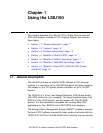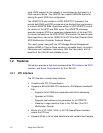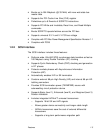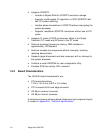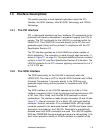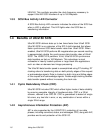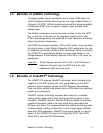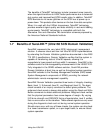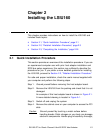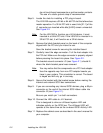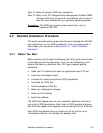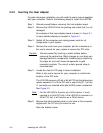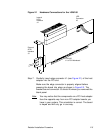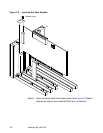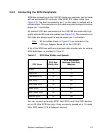
3.75 pc 10.25 pc 11.25 pc 38.25 pc
4.333 pc
48.583 p
c
52.5 pc
34.5 pc
44.25 pc
1-8 Using the LSIU160
The benefits of TolerANT technology include increased noise immunity
when the signal transitions to HIGH, better performance due to balanced
duty cycles, and improved fast SCSI transfer rates. In addition, TolerANT
SCSI devices do not cause glitches on the SCSI bus at power-up or
power-down. This protects other devices on the bus from data corruption.
When it is used with the LVDlink transceivers, TolerANT technology
provides excellent signal quality and data reliability in real world cabling
environments. TolerANT technology is compatible with both the
Alternative One and Alternative Two termination schemes proposed by
the American National Standards Institute.
1.7 Benefits of SureLINK™ (Ultra160 SCSI Domain Validation)
SureLINK represents the very latest SCSI interconnect management
solution. It ensures robust and low risk Ultra160 SCSI implementations
by extending the Domain Validation guidelines documented in the ANSI
T10 SPI-3 specifications. Domain Validation verifies that the system is
capable of transferring data at Ultra160 speeds, allowing it to
renegotiate to lower speed and bus width if necessary. SureLINK is the
software control for the manageability enhancements in the LSI53C1010.
Fully integrated in the SDMS software solution, SureLINK provides
Domain Validation at boot time as well as throughout system operation.
SureLINK extends to the Desktop Management Interface (DMI) based
System Management components of SDMS, providing the network
administrator remote management capability.
SureLINK Domain Validation provides three levels of integrity checking:
Basic (level 1), Enhanced (level 2), and Margined (level 3). The basic
check consists of an inquiry command to detect gross problems. The
enhanced check sends a known data pattern using the Read and Write
Buffer commands to detect additional problems. Margined check verifies
that the physical parameters have some degree of margin. By varying
LVD drive strength and REQ/ACK timing characteristics, level 3 verifies
that no errors occur on the transfers. These altered signals are only used
during the diagnostic check and not during normal system operation.
Should errors occur with any of these checks, the system can drop back
to a lower transmission speed, on a per-target basis, to ensure robust
system operation.




